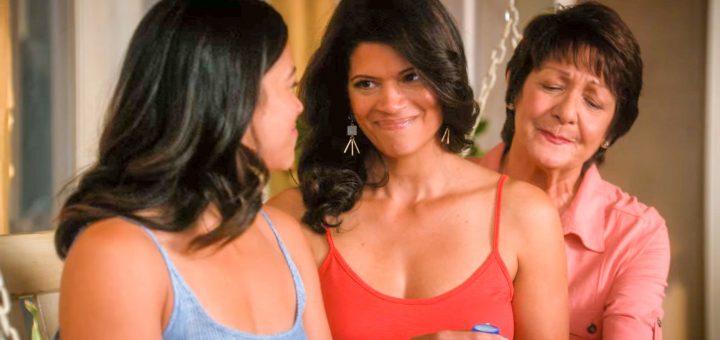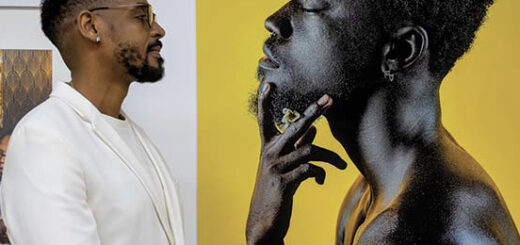Why we should celebrate Jane the Virgin’s respectful inclusivity and final season return

By Karina Zapata, Arts Editor
Finally, we are able to say the beloved five words: Jane the Virgin is back.
The CW’s show is scheduled to premiere Season 5, its final season, on Wednesday, March 27. After the Season 4 finale, a.k.a. the biggest cliffhanger in Jane the Virgin history, fans across the world were begging to know more.
“The only good part about the end of March for me is that #JaneTheVirgin’s final season is coming out and I’ll probably be glued to the screen,” said one Twitter user.
“Is it March 27th yet?! #JaneTheVirgin I need to know everything ahhh!!” said another.
So what exactly is so special about Jane the Virgin and why do so many people resonate with the show?
If you haven’t watched the show — in which case, it’s time to binge watch to catch up — Jane the Virgin is about a 23-year-old Hispanic-American woman named Jane Villanueva, played by Gina Rodriguez, who decides to remain abstinent. However, due to a series of accidents and miscommunication, she’s accidentally artificially inseminated which causes drama — especially with her abuela, or grandmother, who has always been preoccupied with Jane’s purity.
Having grown up in a devout Catholic household, Jane decides to keep the baby. Things get complicated when she discovers that the baby’s biological father is none other than Rafael Solano, a very wealthy man who Jane shared an innocent kiss with five years prior. Rafael used to have cancer and set aside samples in case he and his wife, Petra, decided to have children one day. Funnily enough, it was Rafael’s sister, Luisa, who accidentally artificially inseminated Jane when she was meant to inseminate Petra.
While Jane and Rafael’s incident seemed like fate, Jane was in a committed, long-term relationship with police detective, Michael Cordero. Rafael’s marriage with Petra came to a close, which was already in the works before Jane’s pregnancy. Soon, Jane, Michael and Rafael are caught up in a love triangle which gets more confusing when their son, Mateo, is born.
After the quick introduction, the show’s intensity picks up. Soon, it is no longer an innocent comedy-drama about a type-A woman whose life is turned upside down because of an unexpected pregnancy. It turns into a television show about crime and murder mixed with family, friendship and love.
It’s easy to connect with Jane the Virgin because of how normal Jane is. She is a passionate, hard-working writer who loves too hard and feels too much. Having grown up without a father, she was raised by her mother, Xiomara and her grandmother, Alba, whom she lives with throughout the first few seasons of the show. She barely thinks twice about the lack of a father figure in her life because of the strong women who raised her.
Of course, later on, she finds out that her long-lost father is Rogelio de la Vega, a famous telenovela star. But that’s beside the point.
One of the most important parts of Jane’s life — and the entire show in general — is her culture and ethnic background. As a Venezuelan-Mexican woman (the latter part discovered when she meets her biological father), this part of her identity steers a significant amount of her decisions.
There is a type of camaraderie that comes with seeing your culture represented accurately on mainstream television. And while this isn’t limited to Hispanic or Latino viewers, Jane the Virgin fills an obvious gap within the community.
And her Latina background is something else viewers can closely relate to.
According to Statistica, 73 per cent of Hispanic adults are subscribed or have access to Netflix (where Jane the Virgin is also released) and 32 per cent of those use Netflix multiple times a day.
There is a type of camaraderie that comes with seeing your culture represented accurately on mainstream television. And while this isn’t limited to Hispanic or Latino viewers, Jane the Virgin fills an obvious gap within the community.
Jane the Virgin fully encapsulates what it is like being Latina and demonstrates a family dynamic that is familiar to viewers across the world. But most importantly, Jane the Virgin shows these cultural traits without being blatant or obnoxious.
In an interview before Jane the Virgin’s pilot premiere in 2014, Gina Rodriguez touched on this subject.
“For once, I was reading a script where they weren’t talking about my ethnicity. They weren’t putting a Puerto Rican flag on my shoulder. They weren’t putting a taco in my hand.”
In the past decade, there have only been a handful of shows that have had this effect on Hispanic viewers — the main ones being Ugly Betty, Jane the Virgin and One Day at a Time. However, with Ugly Betty wrapping up in 2010, Jane the Virgin being on its final season and the recent announcement of One Day at a Time being cancelled, Hispanic viewers (and non-Hispanic viewers who resonate with the cultural diversity) are left with little to nothing.
“I’ve always found it funny that the shows I’ve felt most seen in were #UglyBetty, #JaneTheVirgin and #ODAAT. Although the leads were all Latina, their multi-generational families looked most like mine and I loved them for it. I am fully devastated by this,” said well-known freelance writer, Cate Thornback, on Twitter.
Despite this, these shows — especially Jane the Virgin — have proven that there is hope in mainstream media to be respectfully inclusive of other cultures. Success is measured in many different ways and the ability to make minorities feel seen is the best one.
So don’t forget: Jane the Virgin is back for its final season on Wednesday, March 27. You certainly won’t be the only one watching.




